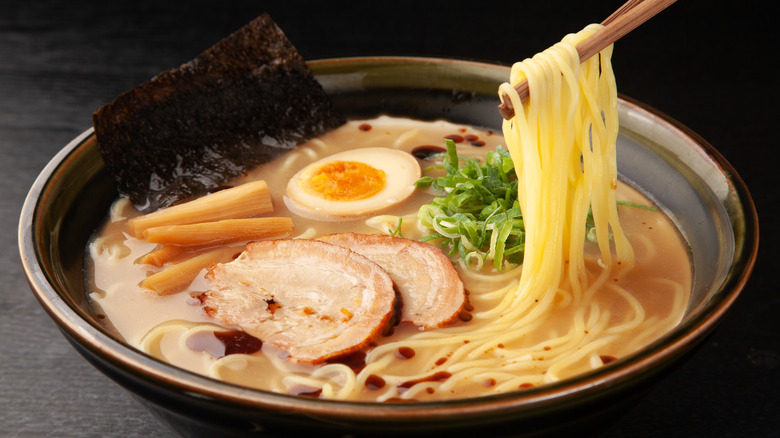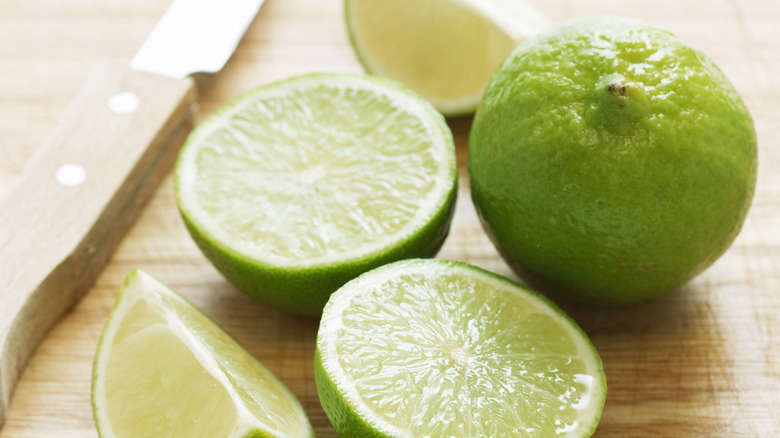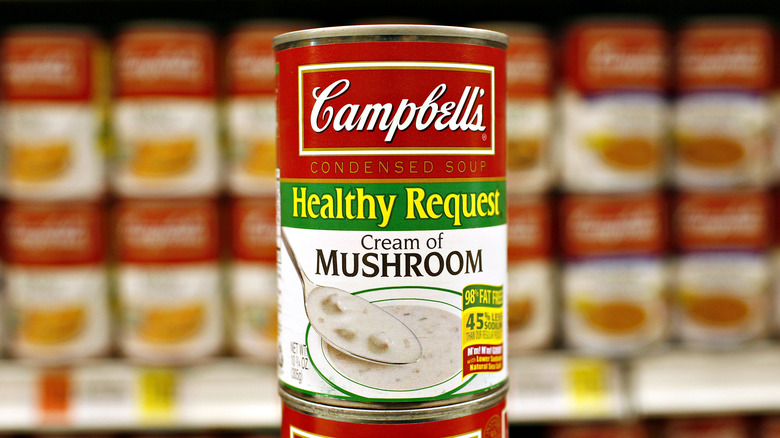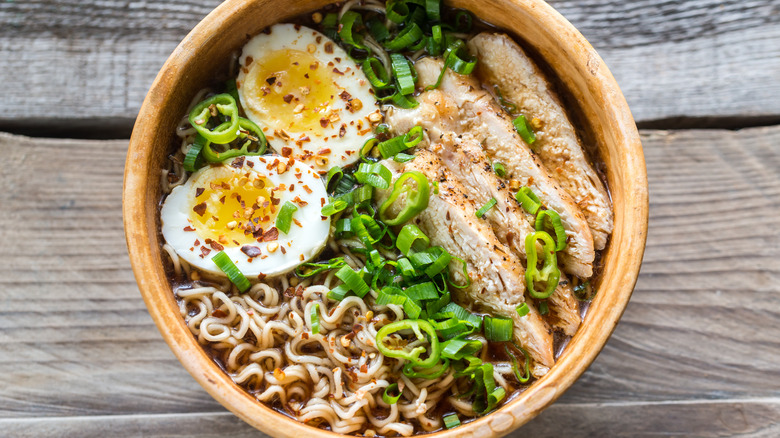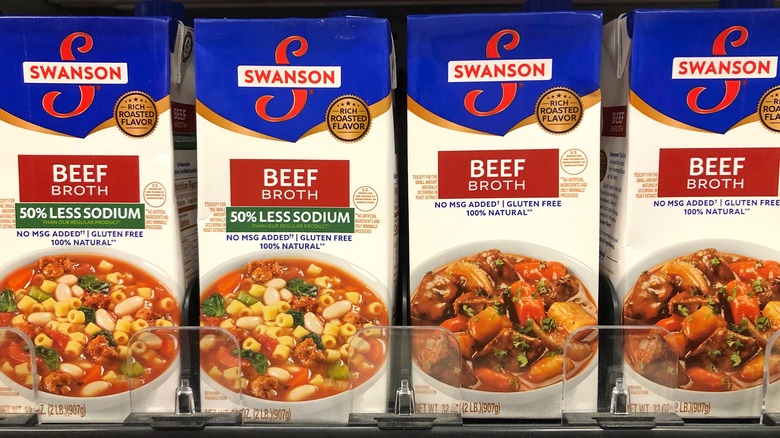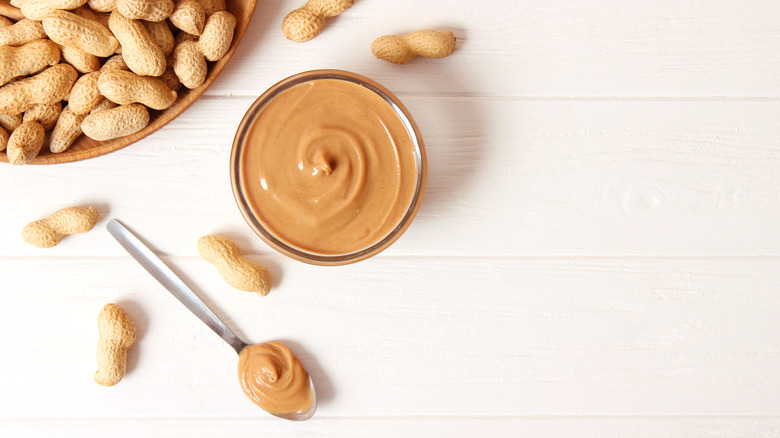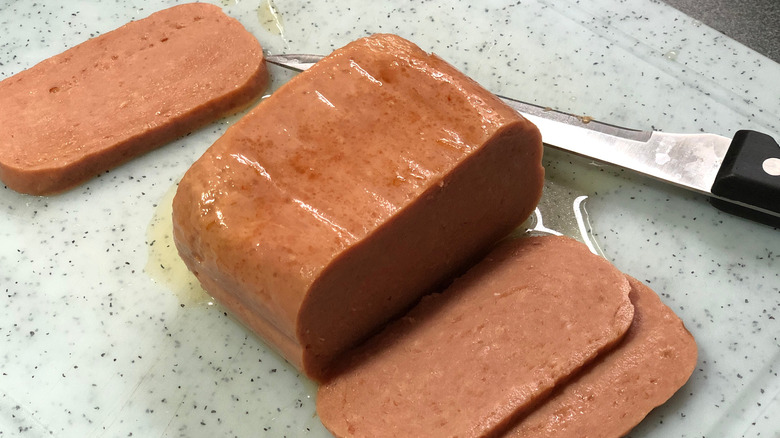16 Ways To Seriously Upgrade Your Instant Ramen
A delectable bowl of ramen soup holds a unique position in the culinary world, as it can be easily dressed down or dressed up, savored in upscale restaurants, or prepared in mere minutes. This versatile dish has become a pantry staple and a go-to comfort food for people in dorm rooms and households across the nation.
Indeed, there's nothing inherently wrong with enjoying a bowl of ramen straight from the package, relying solely on the accompanying seasoning packet to flavor the dish. However, when you invest a little extra time and effort to refine the cooking process or introduce additional ingredients, you can transform this simple snack into an extraordinary, satisfying, and memorable meal.
By incorporating various condiments and toppings, or even altering the cooking process, you can personalize your ramen experience and elevate it to new heights. Fresh vegetables, proteins, and spices can add depth and complexity to the dish, while unconventional ingredients like peanut butter or American cheese can surprise and delight your taste buds with their unique flavors and textures.
Soy sauce
Though it may seem rather simple, adding soy sauce to your ramen can dramatically change this delicious soup. With this simple addition, you get a nice extra burst of flavor and sodium. Plus, you can use the soy sauce to decrease the seasoning packet your ramen will need. You may even use as little as half of that flavor packet and then add a drizzle of soy sauce to create a delicious flavor.
One of our favorite ways to use soy sauce and ramen is as a finishing condiment. After preparing and cooking our ramen according to package directions and making any additions we'd like to, we give our ramen a nice drizzle of soy sauce right on top. There's also a little extra color that makes our food a little bit darker and gives it a nice kick. If you want to reduce sodium in your food, you can also opt for reduced-sodium soy sauce. You'll barely notice the decrease if you choose the right brand.
Sriracha
Sriracha lovers are well aware of the delightful, fiery burst of flavor that this vibrant red chili sauce brings to a wide range of dishes. A fan-favorite, this versatile condiment is a popular choice for adding a kick to classic foods like eggs and macaroni and cheese. However, sriracha is not limited to these staples; it can also elevate the taste of something as simple as ramen noodles.
Much like soy sauce, sriracha can be drizzled over cooked noodles during the dressing phase, infusing the dish with its distinctive, bold taste. The tangy, garlicky, and slightly sweet sriracha flavor complements the savory noodles, creating a mouthwatering fusion that is both comforting and exciting to the palate.
That being said, use caution when choosing which ramen varieties to enhance with the generous help of sriracha. Ramen flavors that are already spicy might become overwhelming when combined with this chili sauce, making the dish challenging to enjoy. To fully appreciate sriracha's unique taste, it's best to add it to milder ramen options, such as those flavored with soy sauce or chicken.
Sesame oil
Sesame oil has long been a beloved ingredient in many kitchens, prized for its rich, nutty flavor that can instantly elevate a wide array of dishes. A pantry staple for cooking popular recipes like fried rice and pad Thai, sesame oil also works wonders when drizzled over a steaming bowl of ramen. Alongside soy sauce and sriracha, sesame oil frequently finds its way into our favorite ramen bowls, enhancing the overall taste and aroma.
In fact, combining these three condiments can significantly transform your standard ramen preparation into a sophisticated, restaurant-quality dish. Sesame oil imparts a delectable flavor that is instantly recognizable, reminiscent of the mouthwatering dishes you often enjoy from your favorite takeout spots. By incorporating sesame oil, you not only enrich the taste of your ramen but also introduce a layer of depth and complexity to the dish. The oil complements the savory notes of soy sauce and the fiery kick of sriracha, creating a harmonious blend of flavors that is sure to please the palate.
Lime juice
Lime juice is an exceptional choice when seeking to add a touch of zest to your ramen. This tangy fruit brings a burst of flavor that deviates from the umami-rich and spicy options often associated with ramen enhancements. Lime juice offers a refreshing, citrusy twist that brightens the dish without overwhelming the other flavors.
We appreciate the versatility of lime juice, as it complements various ramen ingredients without being too distracting. Moreover, it's an affordable and accessible addition that infuses your bowl with a lively, fresh taste. To ensure the most vibrant flavor, opt for freshly squeezed lime juice rather than bottled alternatives, which may lack intensity and freshness. Simply cut a lime in half and squeeze its juice directly into your ramen bowl. For an even more authentic experience, consider using a citrus squeezer to extract every last drop. Once you've added the juice, feel free to toss the spent lime halves into your ramen to allow the flavors to meld even further and add even more of a profound citrus essence.
Kewpie mayo
If you're anything like us, you've absolutely fallen in love with Japanese mayo, better known by many as Kewpie mayo. But this delicious condiment is more than just a tasty addition to food. It can actually substantially enhance the flavor of your ramen.
For a delicious ramen hack that will get you a quick meal, begin by cooking your ramen noodles as you usually would. We enjoy using a spicy ramen flavor for this recipe so that the Kewpie mayo doesn't dilute the flavor of your ramen too much. While that ramen is cooking, make the basic sauce for your ramen. We like to use garlic, Kewpie mayo, an egg, and any seasoning packets that come with the ramen package. Give that a good mix, and then add just a little hot water from your ramen pot. Mix it all using a whisk to create something nice and creamy. And then, when your noodles are done, use tongs to pull them into your bowl. Add any addition to the top of your ramen that you would like, but this recipe is so flavorful it doesn't need much.
Cream of mushroom soup
For a delicious and unexpected way to crank ramen into the next gear, grab yourself a Campbell's mushroom soup can and get to work. The process here is different from other condiment editions we make, but it's not difficult at all.
Mix some water, the included seasoning packet, and half of that Campbell's mushroom soup in the pot you will use to cook your ramen. Once that comes to a boil, put your noodles in and let them do their thing. While cooking, those noodles will become extra smooth and creamy because of the cream of mushroom soup, and when you take them out, you can dress them however you'd like. We enjoy a little bit of spice using sriracha or another hot sauce, soy sauce, sesame oil, and, of course, a nice squeeze of lime juice. This one also tastes divine with some freshly cut scallions.
Buffalo hot sauce
If you thought Buffalo chicken was exclusively a bar food, you've got to give this Buffalo chicken ramen a try. The recipe is simple, and all you'll need is chicken ramen, sour cream, buffalo sauce of your choice, and some green onions. Begin by cooking the ramen noodles as you usually would, incorporating the chicken seasoning into the mix. Once the noodles are cooked to your desired texture, strain out the water, removing as much liquid as possible. Next, add a generous amount of your preferred buffalo sauce to the noodles. While we have a soft spot for Frank's Red Hot Buffalo sauce, feel free to choose a brand that suits your taste buds.
After incorporating the Buffalo sauce, stir in a liberal dollop of sour cream. Mix the ingredients thoroughly until they combine into a rich, gooey sauce that evenly coats the noodles. To elevate the dish and introduce a contrasting, fresh element, garnish the Buffalo chicken ramen with a handful of chopped green onions.
American cheese
In many refrigerators across the country, you will find a stack of squared squishy cheese lovingly labeled American cheese. Typically, this cheese is an ingredient for a grilled cheese sandwich, but you can also include it and your ramen for an unexpectedly cheesy bite. The beauty of this addition lies in its simplicity, as it effortlessly elevates your ramen with minimal effort. Begin by cooking your ramen according to the package instructions or the specific recipe you have chosen to follow. Once the ramen is cooked and still piping hot, place an unwrapped slice of American cheese directly on top of the noodles and broth.
As the cheese melts into the dish, it will create a luscious, cheesy blend that coats the noodles and mingles with the broth. This unique fusion of flavors and textures offers a pleasant departure from traditional ramen recipes while still delivering a scrumptious, satisfying meal.
Egg
The only trouble with many of our favorite ramen additions is that they don't offer a whole lot of added nutrition. However, when you add an egg to your ramen, you get a healthy dose of protein and vitamins B12 and D. Not to mention, adding an egg to your ramen is nearly as easy as adding American cheese.
There are a few different ways to include like in your ramen. One of our favorite ways to add this vitamin boost is by putting it in a separate bowl and giving it a good whisk before adding it in. However, it may not be immediately clear when you should add that egg to your ramen. We recommend letting your water come to a boil, adding in your ramen, waiting two minutes, and adding that egg to allow everything to finish cooking. Of course, if you're hoping to cut down on steps, you could add the ramen and egg simultaneously. The only trouble here is that your egg may become overcooked.
Scallions
Scallions, also known as green onions, are a versatile and popular ingredient that can be found in various cuisines worldwide. In the realm of ramen, scallions are primarily used as a garnish, adding a fresh and vibrant touch to the dish. Although some ramen additions may serve specific purposes within recipes or aim to enhance the cooking process, scallions hold a unique position as a quintessential ramen topping.
The mild, oniony flavor of scallions effortlessly complements the rich and savory characteristics of ramen. Their crisp texture provides a delightful contrast to the tender noodles and the smooth, umami-packed broth. Scallions serve as more than just an aesthetic garnish; they contribute to the overall flavor profile of the dish, balancing out the intensity of the other ingredients.
Incorporating scallions into your ramen is a simple yet impactful way to elevate the dish. To prepare the scallions, trim the root ends and thinly slice the white and light green parts of the stalks. You can also cut them on a diagonal for a more visually appealing presentation. Once your ramen is cooked and assembled, generously sprinkle the scallions over the top as a finishing touch.
Broth
It's no secret that ramen is exceptionally flavorful. In order to take your basic ramen into even more delicious territory, make the simple swab from cooking your ramen in water to cooking it in broth. You could use nearly any type of broth you have around your house, or you could even prepare your own. Whatever you decide to do, it will certainly enhance the flavor of your noodles, even before you add any seasonings or toppings.
You can experiment with a variety of broth types, such as chicken, beef, vegetable, or even seafood to find the perfect match for your ramen preference. Store-bought broth can work well in a pinch, but if you have the time, preparing a homemade broth will provide an even more delectable and satisfying result.
To make this switch, simply follow your usual ramen cooking process, but replace the water with your chosen broth. Bring the broth to a boil, and then cook the noodles according to the package instructions or your preferred recipe. Once the noodles are cooked, you can proceed with the standard seasoning and topping additions.
Peanut butter
American cheese isn't the only pantry staple that can elevate your ramen experience. For a creamy upgrade to your instant ramen, consider adding a dollop of peanut butter. Commonly found in American households as a key ingredient for the classic peanut butter and jelly sandwich, peanut butter can also impart a delicious, rich flavor to your noodles.
Integrating peanut butter into your ramen is a simple process. After cooking the noodles according to the package instructions, add a spoonful of peanut butter directly into the hot noodles and water. Stir well to ensure the peanut butter dissolves and becomes fully incorporated with the noodles, creating a smooth, creamy texture.
For a more elaborate peanut butter-based sauce, combine the peanut butter with additional ingredients, such as sesame oil, rice vinegar, and soy sauce. This blend will result in an incredibly flavorful and unique take on instant ramen, offering a delightful fusion of tastes that will surprise and delight your palate.
Mushrooms
Adding mushrooms is one of our favorite ways to enhance instant ramen with vegetables. To begin, you can sauté your favorite type or assortment of mushrooms in a bit of oil before adding them to your cooked noodles and broth. This method imparts a rich, earthy flavor to the dish, enhancing the overall taste and texture. Alternatively, you can integrate mushrooms into a more elaborate ramen recipe, crafting a dish that resembles the exquisite creations found in fine dining establishments.
Regardless of the approach you choose, selecting the right type of mushroom can make a significant difference in the final result. While button mushrooms are common, we recommend starting with shiitake mushrooms for a more powerful umami flavor. These mushrooms offer a delicious depth that complements the savory nature of ramen while also adding a touch of sophistication to the dish. In addition to shiitake mushrooms, you can explore other varieties like cremini, oyster, or maitake mushrooms to further diversify the flavors and textures.
Butter
While it can be exciting to explore unique additions to your ramen, don't let that keep you from checking out humble ingredients like butter. This simple addition makes your instant ramen taste better, and you'll probably find plenty of this already stocked in your fridge, so there's no reason to make an extra run to the grocery store.
There are several ways you can incorporate butter into your ramen, each offering a unique and delicious twist. For instance, you can add butter directly to the ramen broth, allowing it to melt and create a rich, creamy texture that complements the dish's savory flavors. You can also mix butter with herbs and spices to create a seasoned blend for an added depth of flavor.
Another option is to place a dollop of butter on top of your finished ramen, letting it slowly melt and infuse its velvety goodness throughout the dish as it gently intermingles with the other flavors. This approach adds a touch of indulgence and a luxurious mouthfeel that can elevate your ramen experience.
Miso paste
If using the included ramen flavoring packets in your soup isn't your style, we have a solution for you. First, pick up some miso paste from your favorite grocery store. When shopping for your miso paste, you'll notice that you have quite a few options between white, yellow, or red and plenty of brands of each. Each of these colors will offer its own flavor profile, and the brands are different, too, but there are some pretty standard flavors you can expect. For ramen that is sweeter and mild, opt for white miso. If you want something salty with a little bit of tang from fermentation, choose the red stuff. If you aren't quite sure where to begin or would like something in the middle of those two options, find yourself some yellow miso paste.
Then, instead of using the included sauce package, use that miso paste for an easy upgrade. You'll want to include this in your hot broth after your noodles are done cooking, that way, it can melt right in with your soup. Plus, miso has a whole bunch of health benefits, and when you heat it over a hot stove, many of the benefits start to slip away, making boiling miso a mistake.
Spam
Although some people might turn their noses up at Spam, its enduring status as a pantry staple is undeniable. In particular, Spam enjoys immense popularity in Hawaii, where it is commonly incorporated into dishes like Spam saimin. This delicious spin on your everyday ramen highlights the versatility of this canned meat and offers a delightful way to enjoy it at home. Plus, this addition may very well change your instant ramen forever.
To make Spam saimin, start by preparing your ramen as you typically would, following the instructions on the package or using your preferred recipe. While the ramen is cooking, slice the Spam and cook the pieces in a pan until they are slightly browned and crispy on the edges. Once your ramen is ready, place the cooked Spam slices on top, creating a visually appealing and appetizing presentation.
By combining the rich, savory flavors of Spam with the comforting taste of ramen noodles, you can discover a new and delightful way to incorporate this often-overlooked ingredient into your diet. This simple yet satisfying addition can revolutionize your instant ramen experience, introducing a taste of Hawaii's culinary traditions into your home cooking.
Static Media owns and operates Tasting Table and The Daily Meal.
